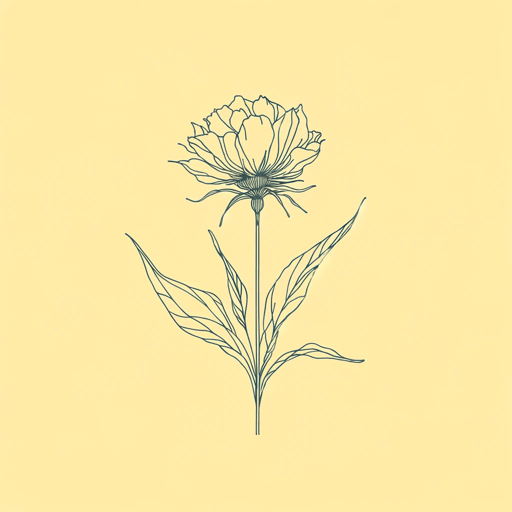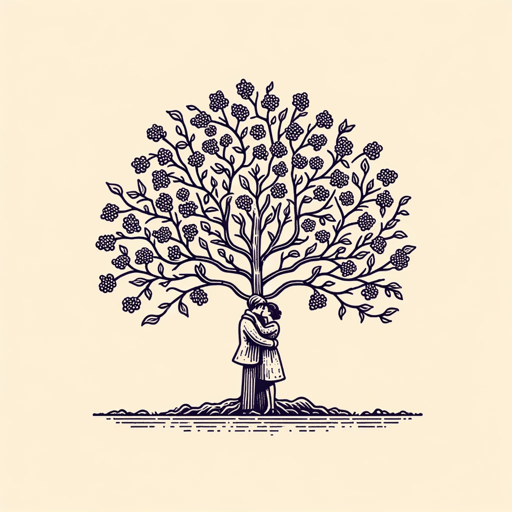55 pages • 1 hour read
Willa CatherThe Song of the Lark
Fiction | Novel | Adult | Published in 1915A modern alternative to SparkNotes and CliffsNotes, SuperSummary offers high-quality Study Guides with detailed chapter summaries and analysis of major themes, characters, and more.
Summary and Study Guide
Overview
The Song of the Lark by Willa Cather is the second novel in her classic American series entitled The Great Plains Trilogy. The trilogy includes O, Pioneers! (1913), The Song of the Lark (1915), and My Antonia (1918). Each novel in this trilogy explores different stories of women who find themselves challenged, nurtured, and built up by the natural beauty of the American West. These novels explore the conflicts and compromises when women either lean into or forge away from traditional gender expectations of early 20th-century America.
Told through six narrative parts, The Song of the Lark utilizes an omniscient third-person narrator who explores both the main character Thea’s emotions and thoughts and the interior thoughts of her friends. The novel traces Thea’s ascendancy into her identity as an artist. The Song of the Lark uses allusions to paintings and opera to portray how art across forms is connected by an important component: All art moves people to know themselves better. The Song of the Lark also explores the sacrifices necessary to achieve one’s ambitions, as well as how one’s past determines the person one becomes, and therefore the future one creates for oneself.
Cather is a classic American author whose novels about life on the American Plains highlight early stories of immigrant life in America, the rugged resilience of pioneer people, and the consequences and joys of pursuing the American Dream. Cather is the author of twelve novels and was the recipient of the Pulitzer Prize in Fiction for One of Ours (1922).
This guide is based on the 2016 edition republished by Open Road Integration Media.
Plot Summary
The Song of the Lark tells the story of Thea Kronborg’s growth into the artist she was born to be. It is set among rugged landscapes of the western American Plains and deserts and cities in America and Germany. These settings perform functions in the protagonist’s character development in a manner similar to the characters Thea encounters and provide details from which the narrative builds important themes.
Part 1, “Friends of Childhood,” introduces readers to Thea Kronborg. Thea is the child of a preacher and a homemaker descended from Swedish and Norwegian immigrants to the United States. They live in Moonstone, Colorado, a fictional small, rural town at the end of a rail line. The townspeople are characterized by their hard work, small-town gossip, and sense of community. Thea’s family is strong, resilient, and loving. They all support her early piano studies because she is notably a talented child. But Dr. Archie, the town doctor, is an early mentor who truly sees Thea’s potential. He finds Thea different from other people in all ways; he nurtures Thea to believe in her future as an artist. Thea’s piano teacher, Professor Wunsch, is a once-talented German immigrant who struggles with alcoholism. Despite his challenges, he is a kind but exacting teacher who notes that Thea’s talent is inherent and sets her apart from the norm. As Thea grows into a teenager, a local man named Ray falls in love with her and is determined to marry her. Ray’s character both exemplifies and challenges typical male gender functions in literature. Ray dies in a tragic train accident, but before his death, he realizes that Thea is not the marrying type. Even as a child, Thea allows no one to come between her and her true artistic potential. Her isolation and singular focus set the stage for later sacrifice and suffering along her journey.
In Part 2, “The Song of the Lark,” Thea moves to Chicago to study piano with Mr. Andor Harsanyi, a Hungarian immigrant who is a gifted pianist and almost obsessive teacher. Although she is excited to leave Moonstone behind, Chicago overwhelms and depresses Thea. She works as a choir singer for money, secludes herself from cosmopolitan life in Chicago, and works hard without seeing results. Harsanyi recognizes Thea’s gift, but her attitude in learning exhausts him. He soon discovers that the reason why such a talented and intelligent young woman is difficult to teach is because the piano is not her vocation. Harsanyi discovers that Thea’s real talent is in singing. Thea takes a chance in Chicago and engages with the art available in the city. Jules Breton’s painting The Song of the Lark, which she sees in a museum, mesmerizes and inspires her. She sees herself in the painting and revitalizes her ambition and determination.
In Part 3, “Stupid Faces,” Thea works as a piano accompanist for her voice teacher, Mr. Bowers. Mr. Bowers is cynical and unfriendly, but Thea appreciates his serious attitude. Thea doesn’t appreciate the singers she accompanies on piano. She finds many popular singers of the time weak in their technique and unintelligent in their interpretations of the music. By observing these singers she can’t respect, Thea learns how to avoid being the type of artist she doesn’t want to be. A brewery heir and Mr. Bowers’s former student, Fred Ottenburg, pays a visit. Thea captivates Fred, and they become good friends. Thea reflects that all of her friends before Fred were older people and teachers. She decides she wants Fred for a sweetheart, not a teacher.
In Part 4, “The Ancient People,” Fred arranges for Thea to spend time alone on his family’s property in Panther Canyon, Arizona. Thea spends two months resting and exploring the expansive beauty of Panther Canyon. She is particularly interested in the remnants of what used to be a significant Indigenous culture. She collects bits of pottery left by the exterminated Indigenous community and finds beauty in the useful art of the pottery. The natural surroundings revitalize Thea’s health, expand her aesthetic sensibilities, and renew her artistic aspirations. Fred visits her, and their relationship becomes romantic. Fred wants Thea to go to Mexico City with him to see if she can accept him as a husband, even though, initially unbeknownst to Thea, he is already married to another woman.
In Part 5, “Dr. Archie’s Venture,” Thea calls upon her old friend and mentor Dr. Archie to help her get to Germany. Thea needs money to move to Germany to advance her opera career, but she doesn’t want to accept more money from Fred, whose marriage makes their romantic relationship impossible. Dr. Archie sells stocks in a mining business to fund Thea’s journey to Germany.
In Part 6, “Kronborg,” the novel flashes forward several years. Thea is a successful opera singer who embraces every opportunity to perform. Thea’s hustle exhausts her because she is a perfectionist in her art. Throughout the years, Thea makes significant sacrifices for her art. She isn’t present for her parents’ deaths, she turns her back on two potential husbands, and she is mostly friendless. Thea’s art defines her life. Dr. Archie becomes wealthy from his mining business, and he visits Thea in New York to watch her perform and reconnect with her. Fred also wants to reconnect with Thea. Both men can’t get over their attraction to her and center themselves and their stake in her success. Thea is still friends with both men, but she keeps a distance between them so she can protect her individualism and her art.
The novel ends with the promise that Thea will become a famous opera star.
Related Titles
By Willa Cather

A Lost Lady
Willa Cather

A Wagner Matinee
Willa Cather

Coming, Aphrodite!
Willa Cather

Death Comes for the Archbishop
Willa Cather

Lucy Gayheart
Willa Cather

My Antonia
Willa Cather

Neighbour Rosicky
Willa Cather

One Of Ours
Willa Cather

O Pioneers!
Willa Cather

Paul's Case
Willa Cather

Shadows on the Rock
Willa Cather

The Professor's House
Willa Cather

The Sculptor's Funeral
Willa Cather

